A few days ago I visited the Lamb Tavern in Leadenhall Market (EC4V 1LR) and came across these splendid tiles depicting Sir Christopher Wren. He is standing in front of The Monument (which still has scaffolding around it) holding up a drawing of how it will look when finished …
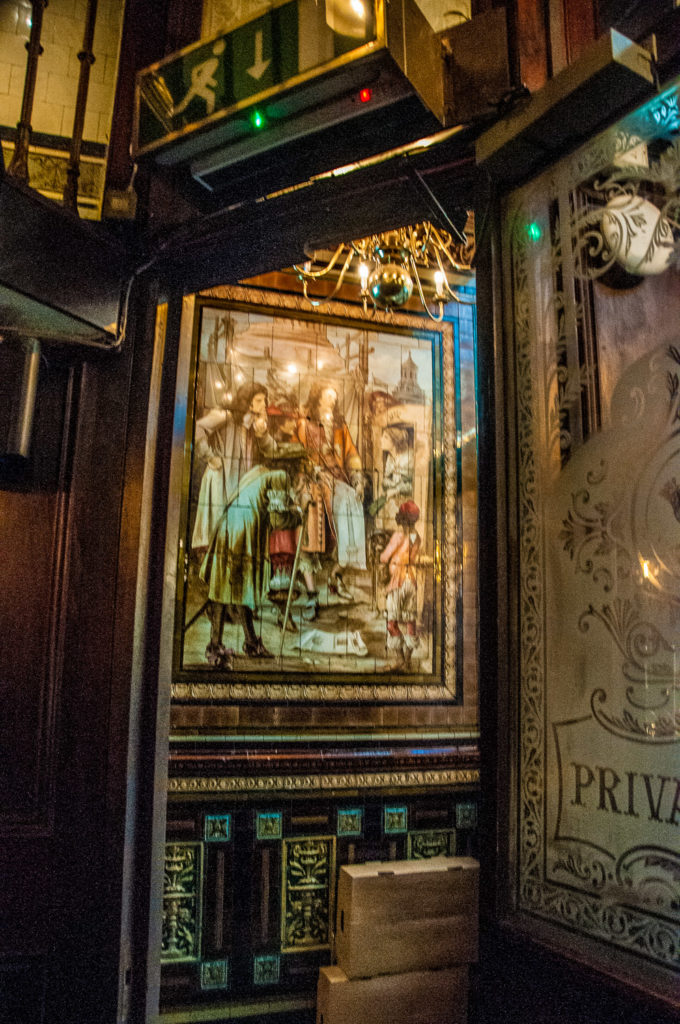
Just look at the characters gathered around him …
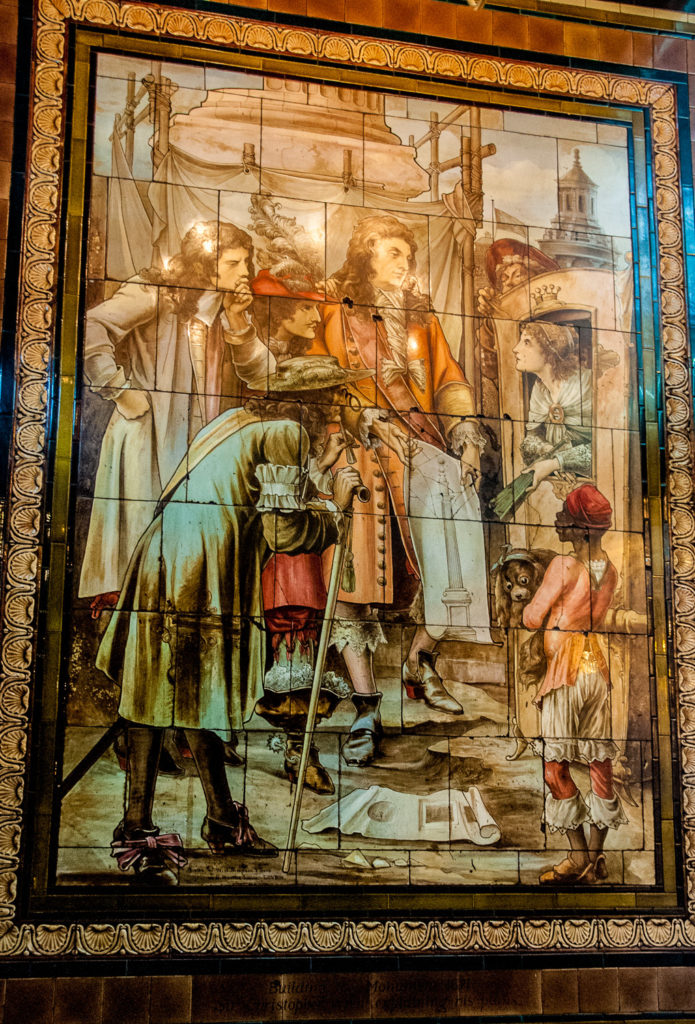
A lady holding a fan leans out of her carriage window to chat to the architect. A child (possibly her servant) stands nearby holding what looks like a pet King Charles spaniel. Some nearby gentlemen are also intrigued, but the chap with the red hat who looks like Errol Flynn might be more interested in the lady. Observe the elegant shoes of the man holding an eyeglass. Not really appropriate for the City’s muddy streets, so maybe he is her carriage companion. The carriage driver looks over his shoulder at the scene. The panel is by W.B. Simpson & Sons and is faintly dated 12th March 1882.
And now another wonderful new discovery for me, the exterior of the former Nordheim Model Bakery at 12-13 Widegate Street (E1 7HP), just off Middlesex Street near Liverpool Street Station. Here are the glazed faience reliefs as a group – they are a joy – showing the bread-making process in beautiful detail …
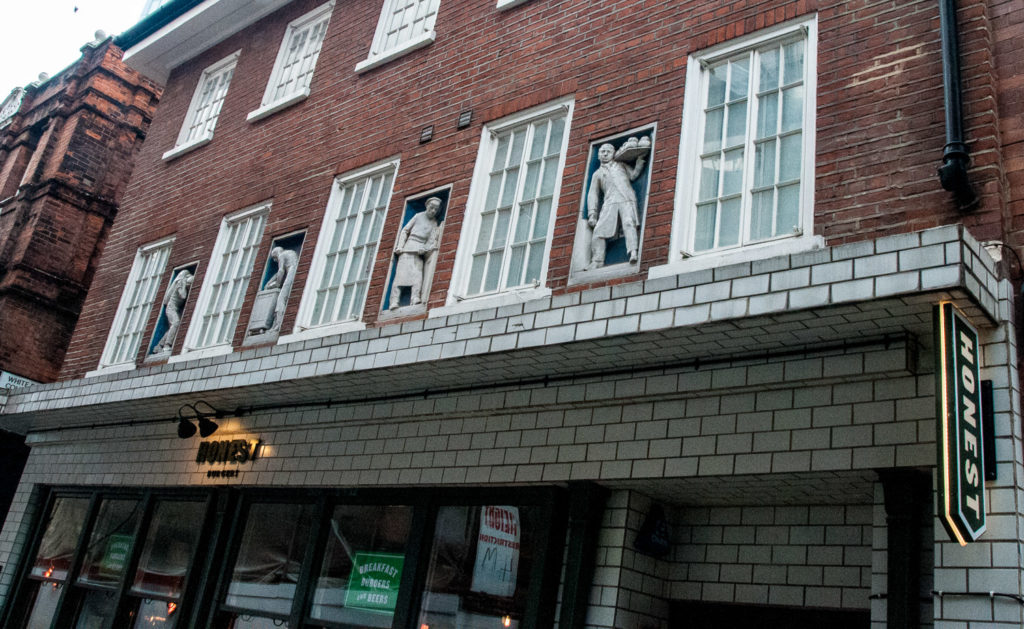
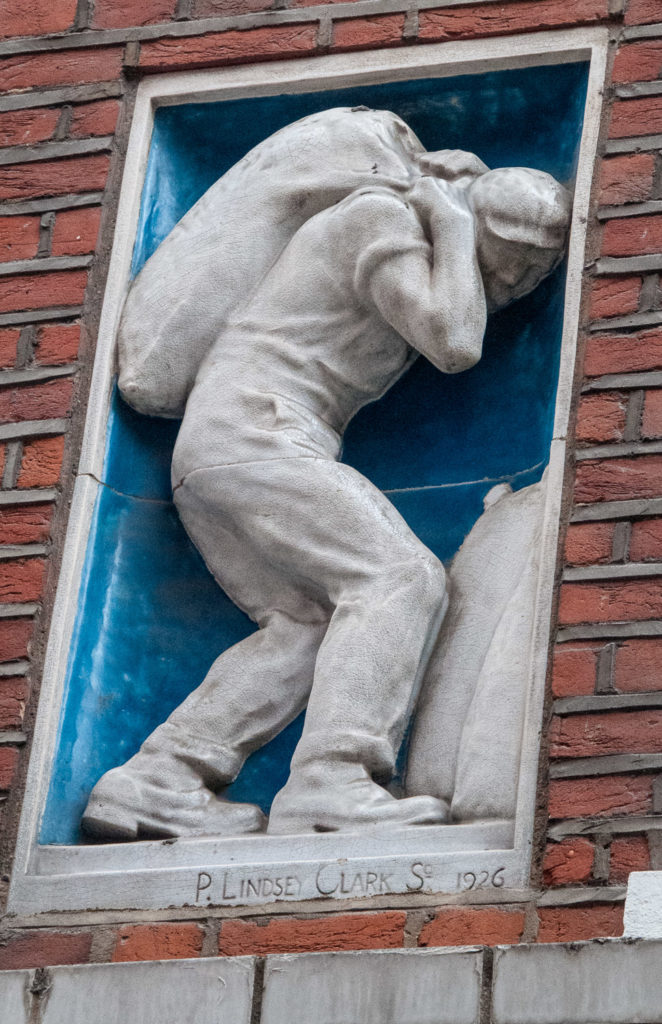
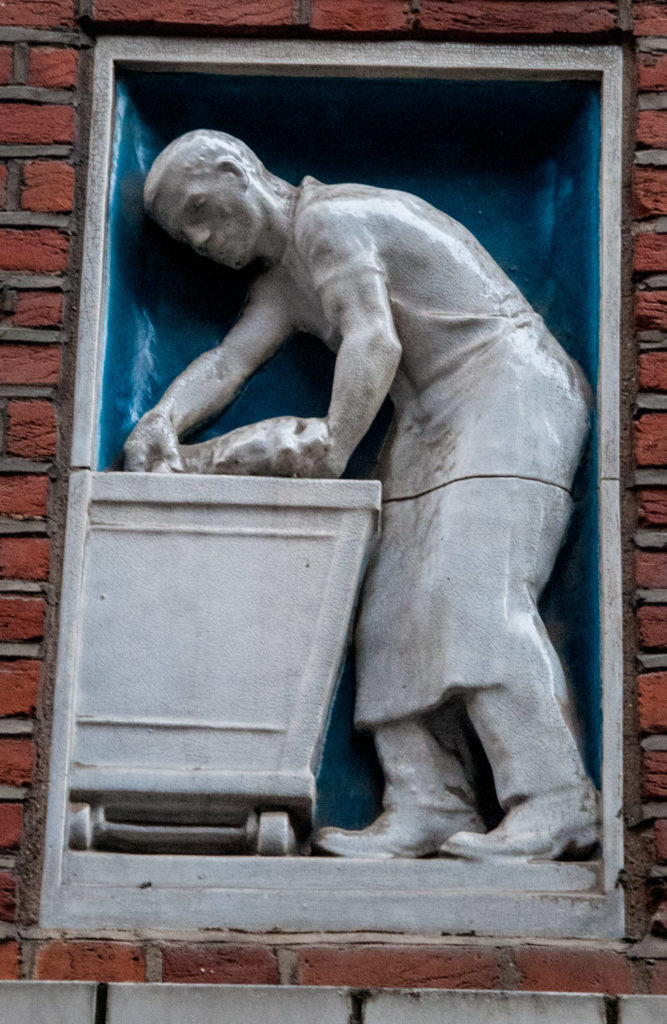
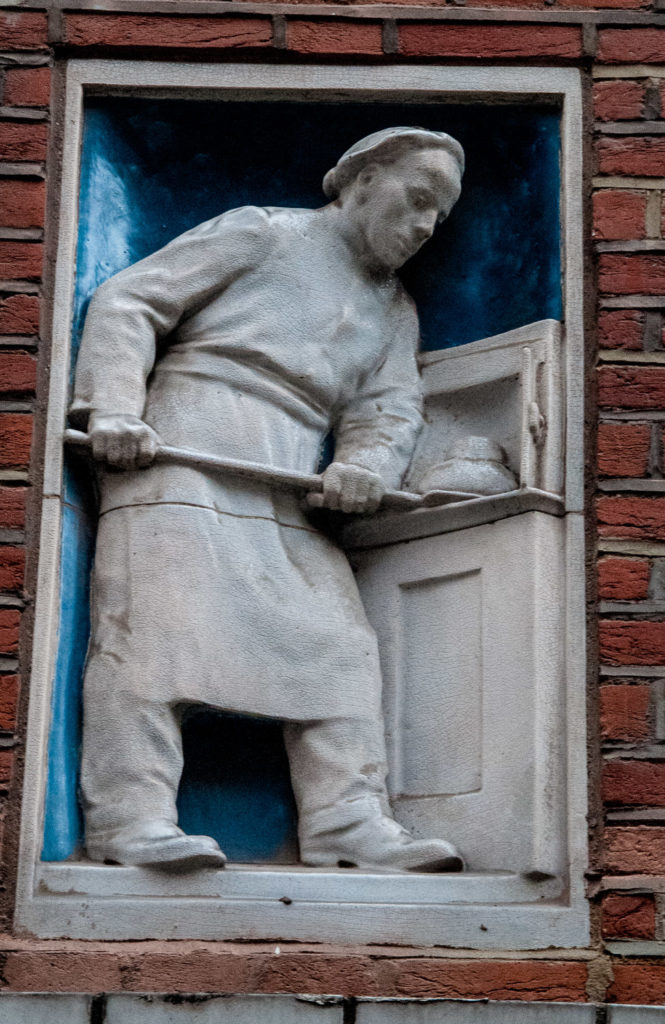
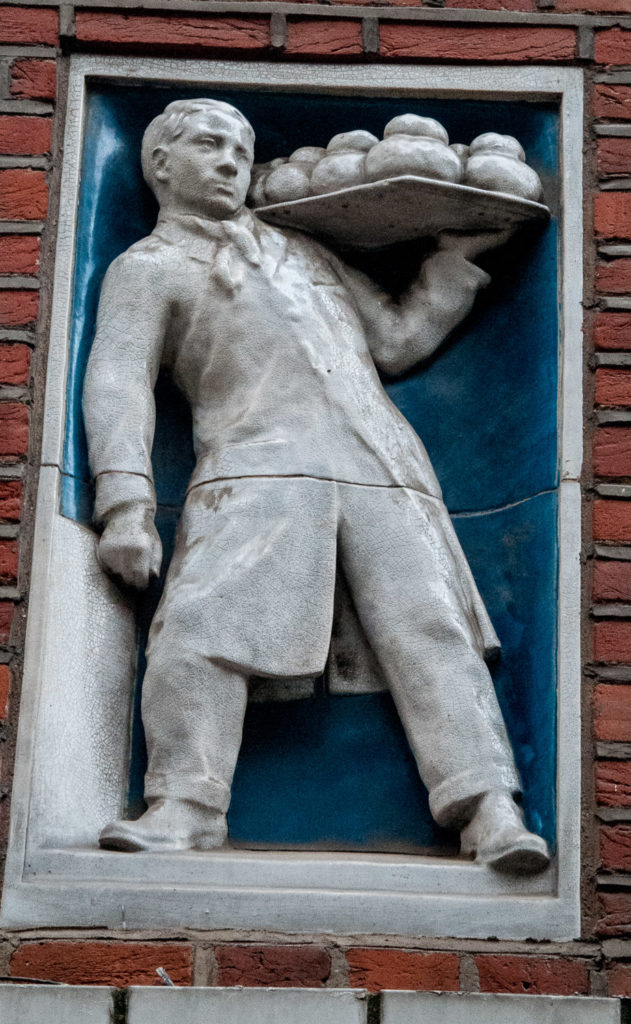
They date from 1926 and their creator was the sculptor Philip Lindsey Clark (1889-1977). Having joined up with the Artists’ Rifles in 1914, he had distinguished himself in the First World War having been awarded the Distinguished Service Order (DSO) for ‘ … conspicuous gallantry and devotion to duty when in command of the left flank of the Company of the Battalion’. Despite being severely wounded, he had fought on until relieved two days later. His work became more and more religious and he eventually entered a Carmelite order, retired to the West Country, and died there at the age of 88. The panels reminded the Gentle Author of the Stations of the Cross and you can read his posting about these works here.
I love this bright red high-relief terracotta frieze on the exterior of Cutlers’ Hall (1886-7) in Warwick Lane (EC3M 7BR). The ancient Cutlers’ Company’s origins go back to 1416, their business originally produced and traded in knives and swords but eventually expanding into household cutlery and domestic wares such as razors and scissors.
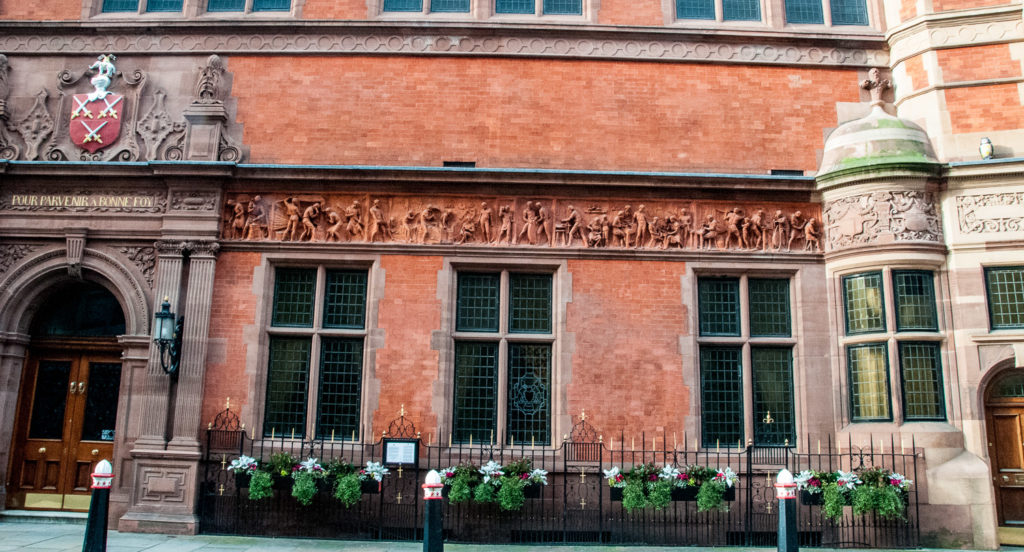
The work realistically depicts late Victorian cutlery production. This is not surprising since the sculptor, Benjamin Creswick (1853-1946) of Sheffield, was once a cutler himself. The frieze (containing 33 figures) was made by E. Goodall & Co of Manchester …

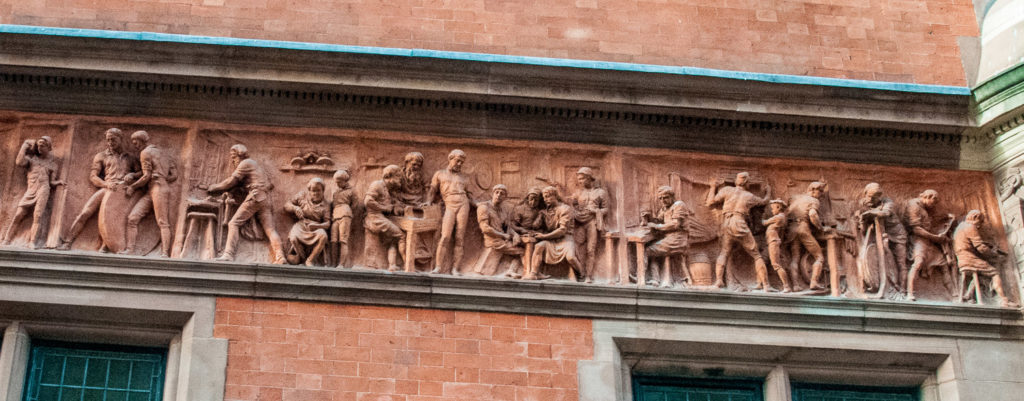
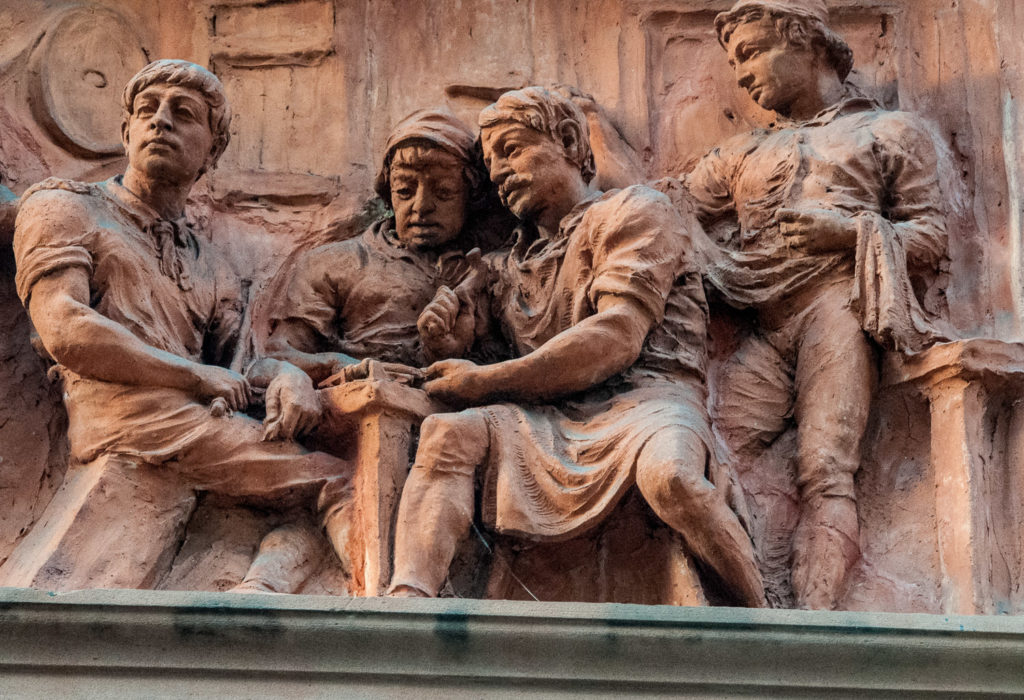
I had to smile when I noticed this plastic owl just above the terracotta on the right. He’s obviously intended to deter pigeons …
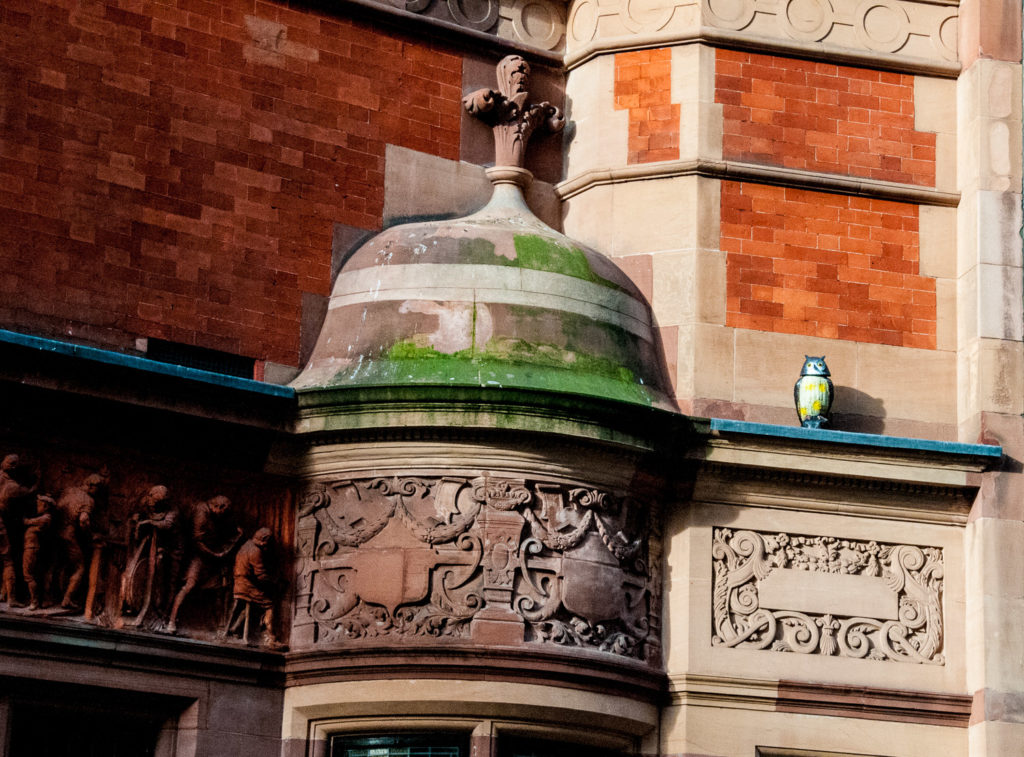
The Bishopsgate Institute (230 Bishopsgate EC2M 4QH) is a fascinating cultural centre in the City of London.
The website tells us that the architect for the building was decided by a design competition and Charles Harrison Townsend (1851-1928) was chosen as the winner. Townsend was an inspiring and original architect whose work was individual rather than adhering to any particular style or movement. The Grade II* listed building combines elements of the Arts and Crafts and Art Nouveau styles, but the influences of Townsend’s interest in Romanesque and Byzantine architecture can be seen in the broad semi-circular arched entrance, twin roof turrets and mosaic interior floors. Do go inside and visit the beautifully restored library.
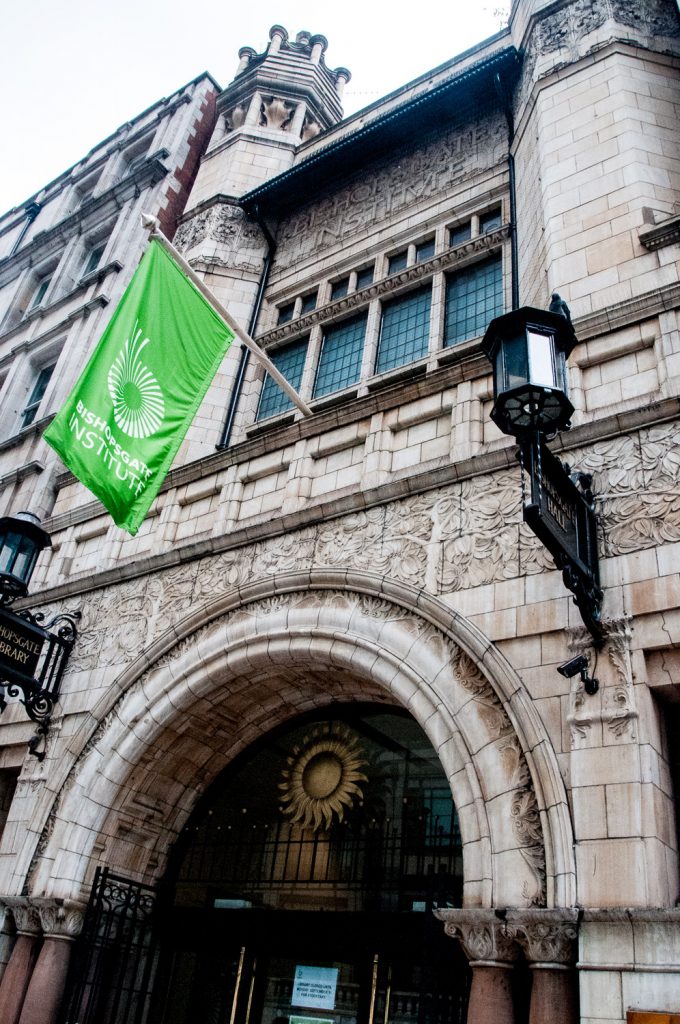
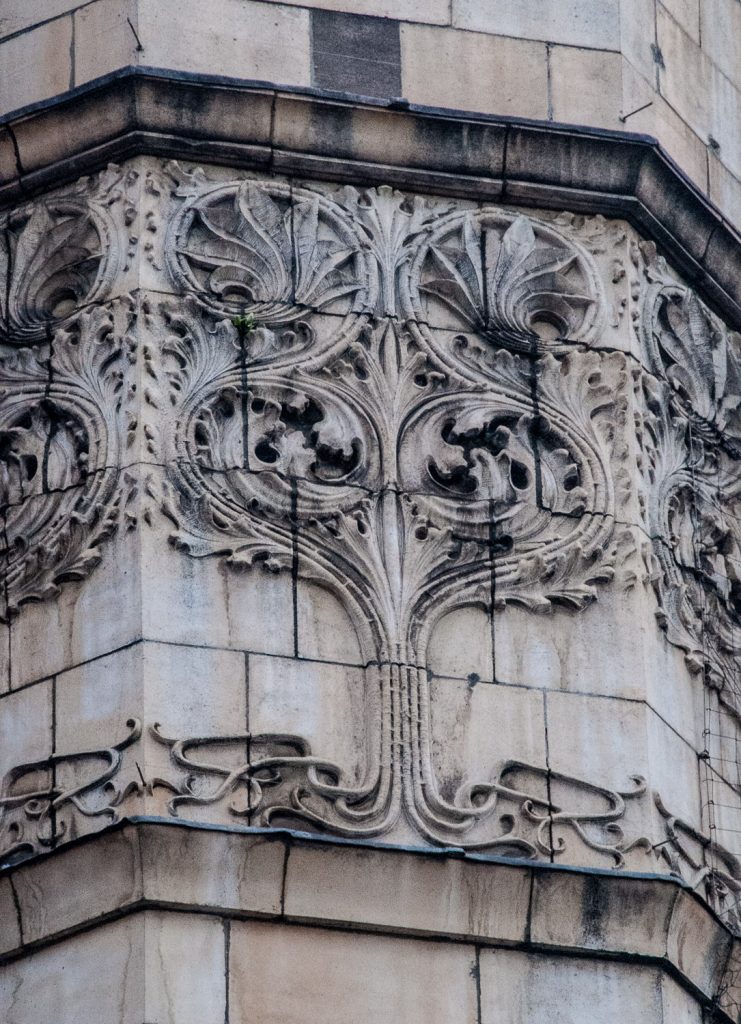
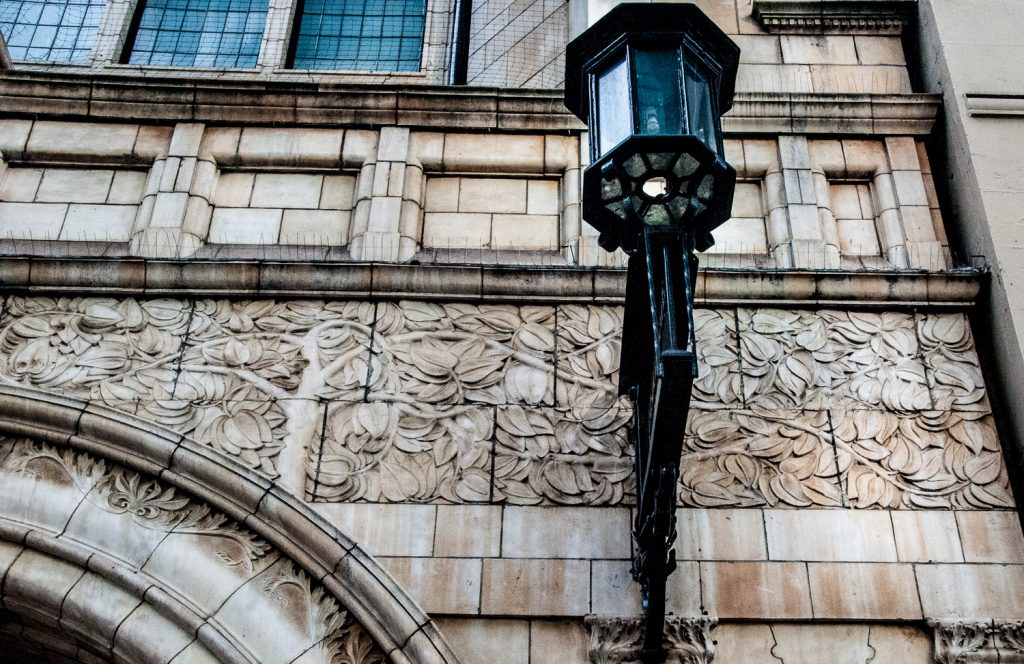
And finally (for now) the flamboyant Bolton House at 14-16 Cullum Street EC3M 7JJ. Built in 1907, it has a white faience facade with green and turquoise decoration including the heraldic device of Prior Bolton, after whom the building was named. It’s another lovely example of Art Nouveau completed just before that style went out of fashion.
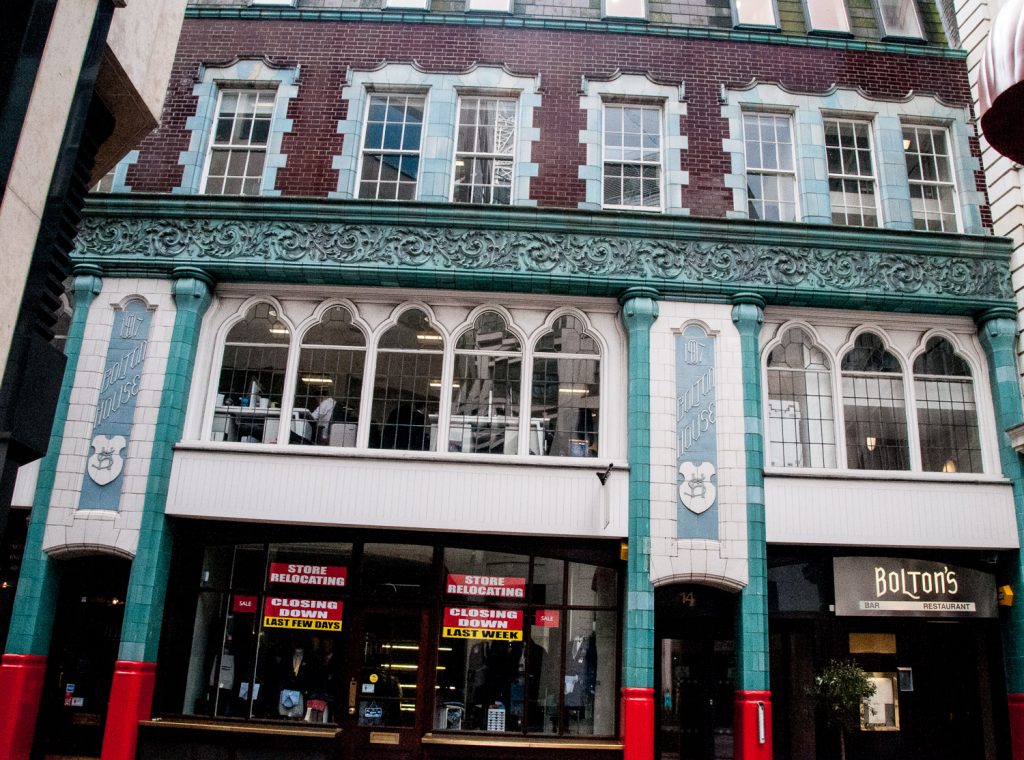
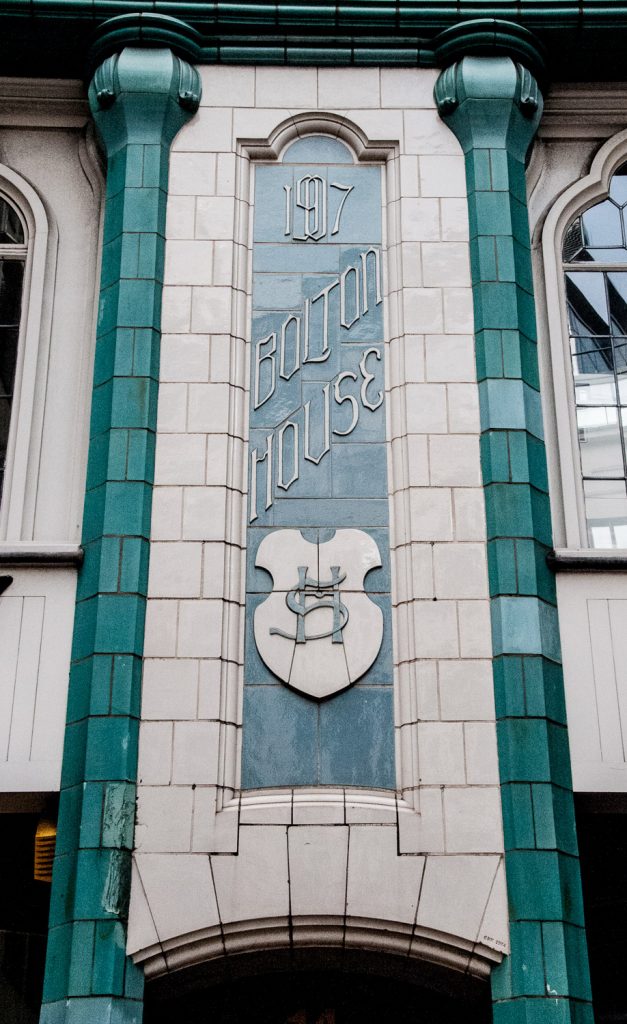
Incidentally, I have already written about the Prior in an earlier blog because of his connection with St Bartholomew the Great. Under the oriel window in the church there is a nice example of a rebus, in this case a representation of a person’s name using a picture. Here Prior Bolton’s name is neatly implied by a crossbow bolt piercing a tun (a type of cask). Bolton was Prior of St Bartholomew the Great between 1505 and 1532 and carried out repair and construction work across the church.

I am indebted to the Tiles & Architectural Ceramics Society for the source of much of today’s blog. They published a special Gazetteer on the City of London and I have used it for reference. The photographs are my own. My thanks also to Richard Jones of London Walking Tours.
